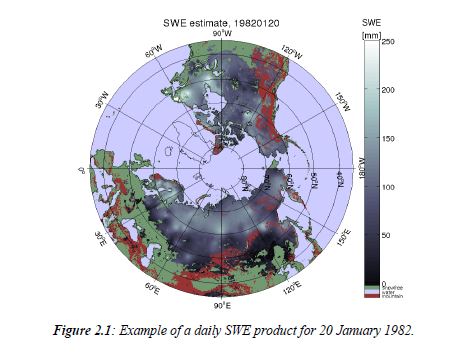D6.2 Observation based CCII-T1s
Download this deliverable here.
This report documents datasets published as deliverable 6.2 “Observation-based CCII-T1s for the recent past and performance metrics for climateclimate
Climate in a narrow sense is usually defined as the average weather, or more rigorously, as the statistical description in terms of the mean and variability of relevant quantities over a period of time ranging from months to thousands or millions of years. The classical period for averaging these variables is 30 years, as defined by the World Meteorological Organization. The relevant quantities are most often surface variables such as temperature, precipitation and wind. Climate in a wider sense is the state, including a statistical description, of the climate system
model based CCII-T1s, where “CCII-T1” stands for “Tier 1 Climate ChangeClimate Change
Climate change refers to a change in the state of the climate that can be identified (e.g., by using statistical tests) by changes in the mean and/or the variability of its properties, and that persists for an extended period, typically decades or longer. Climate change may be due to natural internal processes or external forcings such as modulations of the solar cycles, volcanic eruptions and persistent anthropogenic changes in the composition of the atmosphere or in land use. Note that the United Nations Framework Convention on Climate Change (UNFCCC), in its Article 1, defines climate change as: 'a change of climate which is attributed directly or indirectly to human activity that alters the composition of the global atmosphere and which is in addition to natural climate variability observed over comparable time periods'. The UNFCCC thus makes a distinction between climate change attributable to human activities altering the atmospheric composition, and climate variability attributa Impact Indicators”. Three types of data are discussed: CCII-T1s calculated from observational data, CCII-T1s based on climate models, and observational and re-analysis data used for evaluation and/or bias-correctionbias-correction
(or ‘bias-adjustment’) - methods to ‘calibrate’ model simulations to ensure their statistical properties are similar to those of the corresponding observed values.
of model-based indicators.


A number of satellite based datasets for climate change indicator indices were acquired and assessed and results presented in this document. There are several promising candidates among, e.g. the ESA CCI programme, ESA GlobSnow and EC CryoLand that were documented and also examined for application for bias correction of climate model data.
In addition to describing produced datasets this document examines the challenges inherent in comparing model-based data to observational/re-analysis data and using these datasets for bias-correcting model based data. Both re-analysis- and satellite-based datasets have their own errors (due to modelling-, sensor characteristics and limitations) in turning the raw observations to variables that can be compared with those provided by climate models. While satellite-based observations have the advantage of providing large, usually global spatial coverage and providing data from remote locations where observations would otherwise be sparse or non-existent, they have their own set of challenges that need to be taken into account, such as data caps due cloud coverage and low light conditions or those caused by given instrument’s chosen orbit. This causes another source of uncertaintyuncertainty
Lack of precision or unpredictability of the exact value at a given moment in time. It does not usually imply lack of knowledge. Often, the future state of a process may not be predictable, such as a roll with dice, but the probability of finding it in a certain state may be well known (the probability of rolling a six is 1/6, and flipping tails with a coin is 1/2). In climate science, the dice may be loaded, and we may refer to uncertainties even with perfect knowledge of the odds. Uncertainties can be modelled statistically in terms of pdfs, extreme value theory and stochastic time series models. that needs to be taken into account when bias-correcting model-based data.
Additionally, the length of time-series is often a problem, as bias-correction needs to have several tens of years’ worth of data in order to take into account the natural variability; whereas suitable satellite time series are typically limited in time coverage to at most a few decades. The work carried out is a fair start for a field that has not been thoroughly investigated so far. Several problems and issues in the data and approaches suitable for the work were identified and early progress shows that there is potential to utilize the unique satellite-based datasets for both bias correction of climate model data and an independent “ground truth” reference datareference data
See Baseline.
All the CCII-T1s will be available through the CLIPC portal. The climate model data will be available through the CLIPC portal and the Earth System Grid Federation (ESGF) web portal. Observational data is available through either ESGF or individual institutions responsible for producing said data.